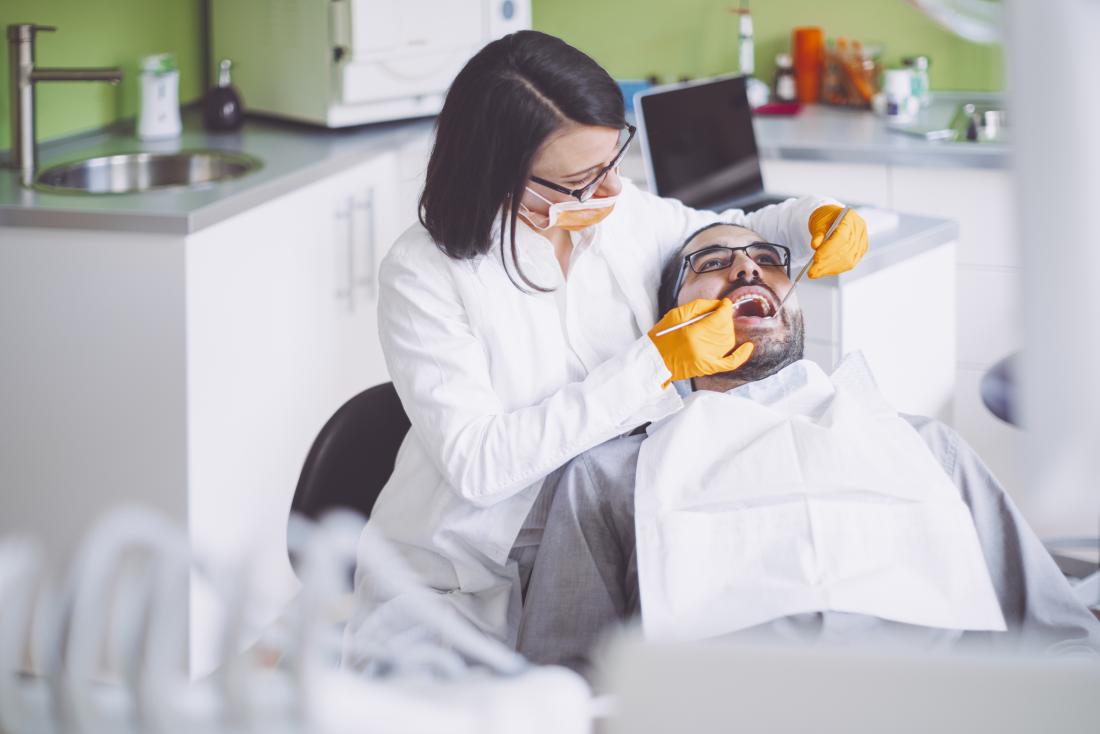The hygienist cannot tell you there’s a cavity. She may have seen the cavity, but telling you would be a breach of protocol. Depending on her bedside manner, she might make a sound or tell you the doctor will take a look at that, or she might give no sign at all, nothing except wheeling around in her swivel stool and tapping away on the keyboard, making a note you know is not good. Nothing in the notes is ever good.
Then she swivels back towards your mouth, still agape or beginning to falter on a muscular level, and she returns to the task at hand: taking a scalpel to your teeth and gums, scraping away whatever’s built up over the months you’ve been absent from this office. However long ago you last visited, it was too long ago. However hard you worked on brushing and flossing, whatever new gadget you bought or were sold, it was not enough. You failed. There is plaque on your teeth, and now this person whose job, in part, is to remove the plaque has to remove the plaque. Unacceptable. Here’s what to do until your next visit to ensure there is no repeat of this disgraceful episode.
Except it is always a disgrace of some variety. Is this just every dentist I’ve ever had? Have you ever received an ‘A’ in Dental Hygiene? How about a great work flossing? No? Does it even matter how much plaque you have? The sliding scale of disappointment seems to range from “you forgot to take the kids to school” to “you ran over my dog.” There is no scenario where you took the kids to school. This is the ritual flogging. However much plaque you have is too much, even if you flossed every day—OK, most days—and even if the cleaning didn’t take that long. (If it does take long, you are treated to the growing sensation that they have come with ice picks and they’re taking your enamel, too.) At the end, no matter what, you will be told in hushed tones that there was a lot of plaque.
In more excited tones, you’ll hear about what you can do to prevent this ever happening again, until it of course it does. Has anyone ever not had plaque? Has some sainted figure been sat down in the chair, leant back with mechanical force, and told to open wide so the hygienist can poke around here and there only for her to admit, with a soft smile, eyes twinkling, that you’re all good? At what point is this like taking your car to the mechanic only for him to take personal offense at the idea you need an oil change?
No matter what, you will be told in hushed tones that there was a lot of plaque.
Before any of that, though, there are the machines. All I remember from my pediatric dentist is that he had a sort of Mr. Rogers quality of putting kids at ease as he poked around in their mouths with sharp objects. At the end, he gave you a lollipop. Did I get X-rays? Must have. But now there seems to be an X-ray every time I go. And not just the normal X-rays, the ones where you have to bite down on some metal mouthpiece with a right angle that juts into the roof of your mouth. There’s those, but a couple visits back there was a new “360 degree” X-ray contraption, which scans out your entire dome and will catch cavities and tumors and neuroses just as they begin to form. There’s now some kind of 3D imaging device that seems to perform all the essential functions of dentistry: identifying cavities, looking for rot in teeth, examining the amalgamated strain on the chompers from stress-clenching or a badly formed bite. Last time I went, nearly two years into pandemic life, I learned there were microfractures in a few of my teeth, likely from stress. I’ll get right on that. And no, I’m not wearing a mouthguard every night at 30 years old. “At least you’re honest,” the doc said. The honest thing to say would be that I am beginning to believe that at some point, all this information ceases to be useful. Yeah, you want to hold onto your teeth, but surely we’re going to take on some water over the decades. Surely we’ll have some wear-and-tear to report on the Craigslist posting.

